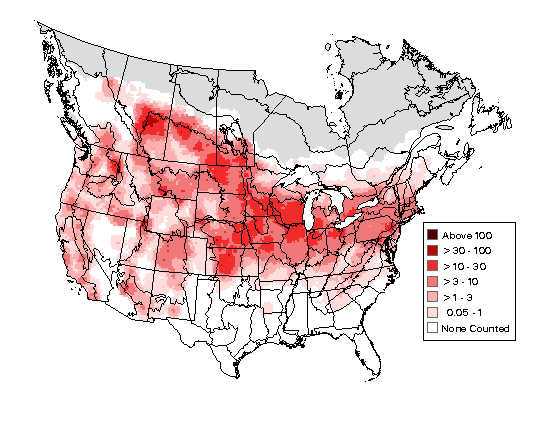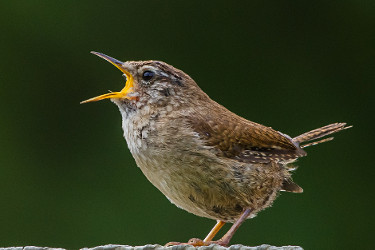House Wren
House Wren Information
Length: 4.5 - 5.25"
Habitat: Open woodlands, forest edges, forest openings, shrubby areas, farmland, orchards, residential areas, suburban parks.
Diet: Insects such as grasshoppers, beetles, crickets, true bugs, caterpillars; spiders, millipedes, snails.
Additional Information
House WrenDescription, subspecies, distribution, behavior, diet, reproduction, behavior, migration, and conservation status. Includes photos and range map. (From Wikipedia)
House Wren
Identification Tips
- Short, thin bill
- Indistinct supercilium
- Eye ring
- Gray-brown upperparts (browner in eastern United
States birds) - Pale gray underparts with dark barring on belly and
undertail coverts - Wings and tail barred with black
- Tail frequently held upright
- Pink legs
- Sexes similar
Similar species
Other wrens with indistinct superciliums are Winter, Sedge and Rock Wrens.
Winter Wren is more reddish-brown above, darker below and has a shorter tail. Sedge Wren is buffier on the breast and is streaked with white on the crown and back. Rock Wren is larger with a contrast between the gray back and brown rump and has buffy tips to the tail.
(Credit: U. S. Geological Survey)
Breeding Bird Survey Map,
2011-2015

(Image credit: USGS)
Range in New England
The House Wren breeds throughout New England with the exception of northern Maine, where it is only found locally during breeding season.
House Wrens winter mainly in the southern United States and in Mexico, although individuals are occasionally found wintering further north.
Christmas Bird Count Map
Historical CBC Map from USGS
